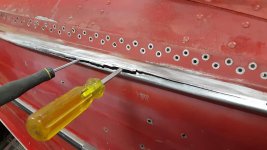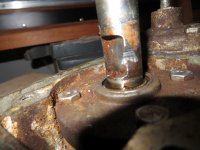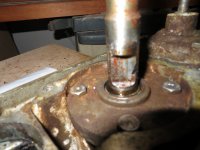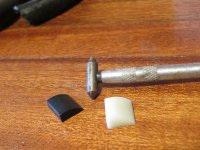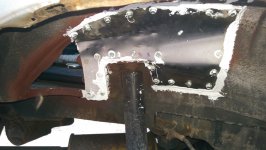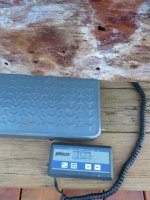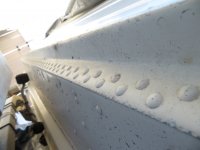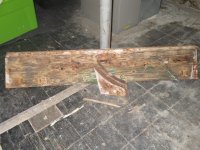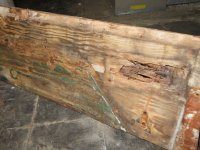Note that there are innumerable ways for this to not end well. Surface prep needs to be immaculate, and you have so much flexing, thermal expansion, etc. going on.
A broad thank you to everyone weighing in on this issue: I appreciate every bit of insight that each of you have offered: The weather broke today and I was able to pull back the tarp and evaluate the condition of the chine and rivets: Not only are the chine rivets in great condition, there wasn't a loose or missing rivet anywhere: This SC was a fresh water boat: If what I hear tell is correct: "Fresh water boats have their wood rot away..and salt water boats have the hull rot away" Judging from this boat, I would have to agree: Literally every piece of wood was rotted to mulch: When the wood transom was jack lifted off the boat and layed on the ground, I went to pick it up by hand and was shocked at how much it weighed. The main piece by itself weighed 36 pounds and looked like swiss cheese and mulch.
Here's an adhesive that I bought for a different project: It's very expensive but claims to be able to bond aluminum without any surface prep..
SCIGRIP® SG5000 Series Methacrylate Adhesives are high strength two-component products for bonding metals, plastics and composites. Also excellent for repairing fiberglass molds. They offer a unique combination of convenient 1:1 mix ratio and ability to adhere to a wide variety of materials. Most metals, including steel and aluminum, can be bonded without surface pretreatment.
For the boat I will be using Woven Roven and Carbon Fiber and West System Epoxy to strengthen the riveted chine: I'll be posting pics of the upgrade in the future: All work on the boat has ceased during the cold: Should be able to get started on the floors and transom when the weather warms sometime in April: I can't wait to get back to it...
Engine is coming along nicely...All cylinders checked out at 120...
as for support, I would not recommend trying to glass in some structure. Eventually it will give way and make room for water to penetrate. Then you have the same hull flex that you have now plus trapped water. Poly resin does not stick to AL like it does on wood or fiberglass hull. If you are worried about tackling the task of doing solid rivets below the water, it’s not as hard as it sounds in your head.
Hello Benfish....The PO fiberglassed the floor to the sides with Poly and mat...and yes water penetrated and took out all the wood: I can confirm that poly is a poor adhesive ...I pulled the glass off easily where the floor met the sides: I really have no concerns at all about working with rivets; I'm looking for 5 solid seasons in a safe boat....which I will likely donate to a boat charity . I've had a mountain of experience working with Epoxy and I feel very confident that I can achieve a high strength bond on the aluminum: As far as stress is concerned that shouldn't be a factor: I will be following the original engineering changes from Starcraft, but doing them with Epoxy: Even if not as effective as rivets, it still has to be better than leaving the boat without any upgrade..Your insights are appreciatefd..!
